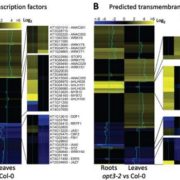
Iron availability sensed in leaf vasculature causes changes in transcriptional programs (Plant Cell Environ)
Plant Science Research WeeklyIron is an essential micronutrient for plants but it is often not bioavailable in the soil. Thus, plants have evolved difference processes for iron sensing and iron uptake. OLIGOPEPTIDE TRANSPORTER 3 (OPT3) is an important iron transporter and is a component of the systemic network that mediates iron…
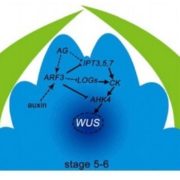
AUXIN RESPONSE FACTOR3 regulates floral meristem determinacy by repressing cytokinin biosynthesis and signaling ($) (Plant Cell)
Plant Science Research WeeklyThe cross-talk between cytokinin and auxin has been well established from different developmental perspective. In this article, Zhang et al. have explored the role of cytokinin and auxin cross-talk in floral meristem (FM) determinacy. The authors demonstrated that auxin induces the expression of ARF3…
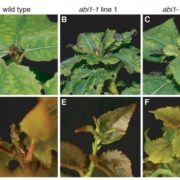
Photoperiodic control of seasonal growth is mediated by ABA acting on cell-cell communication ($) (Science)
Plant Science Research WeeklyPlant growth is regulated seasonally, but our knowledge is limited about how their growth is inhibited or re-initiated seasonally. Looking at hybrid aspen, in this article, Tylewicz et al. explored how seasonal cycles of growth and dormancy help perennial plants adapt during winter. In the long days…
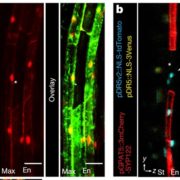
Diffusible repression of cytokinin signaling produces endodermal symmetry and passage cells (Nature)
Plant Science Research WeeklyPassage cells are a subset of interspersed root endodermal cells that are unsuberized, which is thought to aid in transport because suberin inhibits transcellular transport. In Arabidopsis, suberization follows a stereotypic pattern which responds to many stress conditions, partly mediated by abscisic…
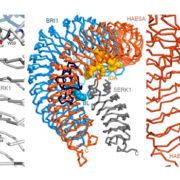
Mechanistic basis for the activation of membrane receptor kinases by SERK-family coreceptors (PNAS)
Plant Science Research WeeklyLRR-RKs (Leucine-Rich Repeat Receptor Kinases) are membrane-spanning receptor molecules that recognize a diverse array of signaling ligands. SERKs (SOMATIC EMBRYOGENESIS RECEPTOR KINASEs) are co-receptors that are required for signal processing. Like LRR-RKs, SERKs span the membrane, with an intracellular…
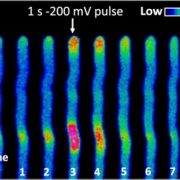
Tip-localized Ca2+-permeable channels control pollen tube growth via kinase-dependent R- and S-type anion channel regulation (New Phytol.)
Plant Science Research WeeklyCalcium plays a major role in regulating pollen tube (PT) growth. Calcium levels are oscillatory in nature at the PT tip, along with anion efflux. Calcium has been shown to regulate anion channels in guard cells through calcium protein kinase (CPK) activation. Gutermuth et al. provide evidence for…

Metal sensing by the IRT1 transporter-receptor (Mol. Cell)
Plant Science Research WeeklyPlants need some but not too much iron, so the regulation of iron transporters is quite tight. IRT1 is a broad-spectrum metal transporter that is crucial for iron uptake (mutants can only be rescued by massive amounts of iron). IRT1 synthesis is transcriptionally upregulated by iron limitation, and although…
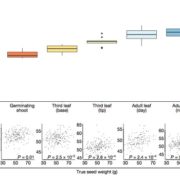
Dysregulation of expression correlates with rare-allele burden and fitness loss in maize ($) (Nature)
Plant Science Research WeeklyDeleterious mutations often underlie disease susceptibility and reduced fitness, but are very difficult to study due to their low frequency in the population. Maize is a great system for studying deleterious mutations because of high genetic diversity and the rapid decay in genetic linkage, enabling…
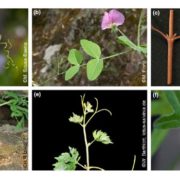
Review: The molecular control of tendril development in angiosperms (New Phytol.)
Plant Science Research WeeklyThere are obvious advantages to being a climbing plant; for example, climbing is a low-cost way to avoid being shaded by your neighbors. Tendrils, which evolved independently several times, are one climbing strategy (others include twining stems and sticky adventitious roots). Sousa-Baena et al. review…

